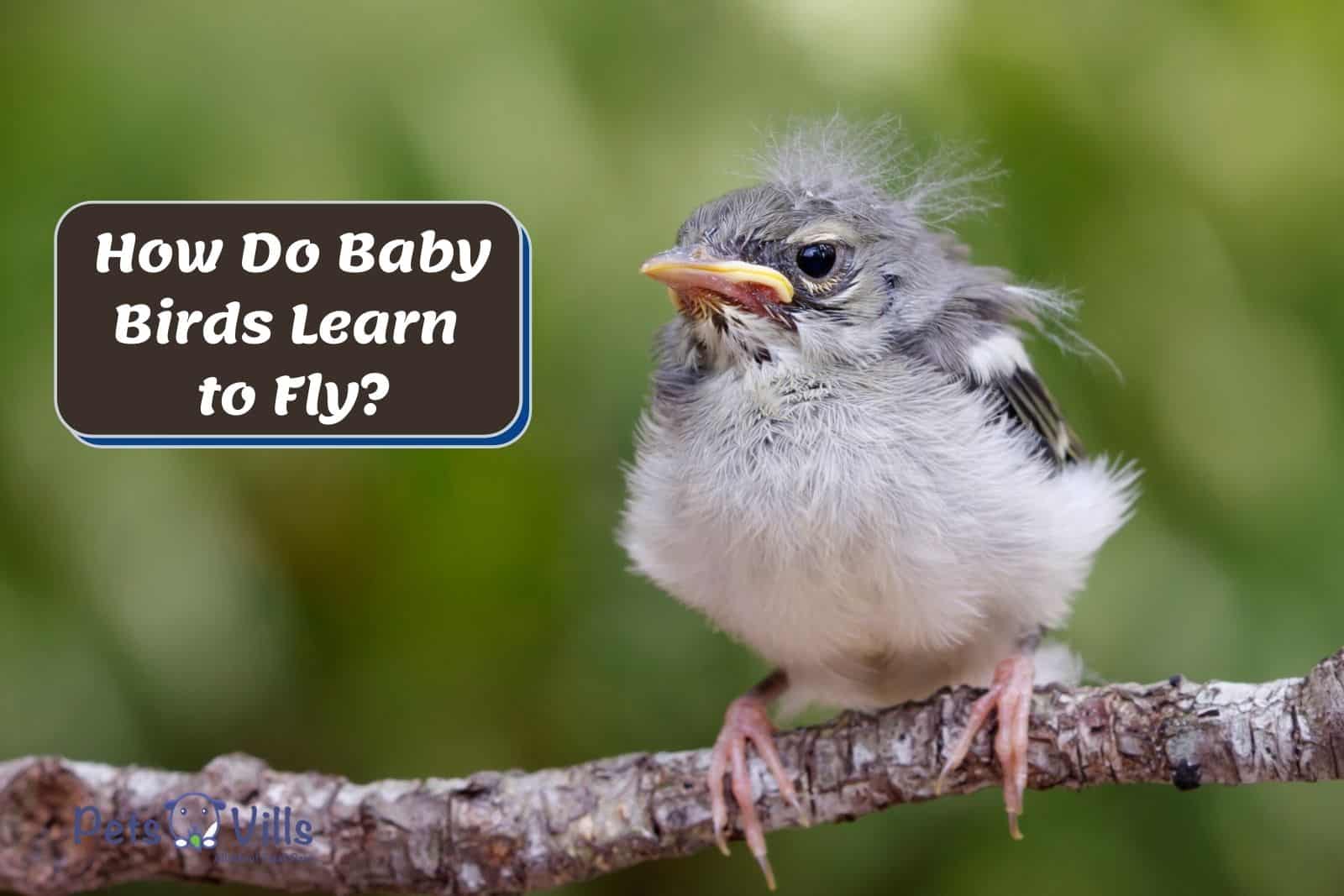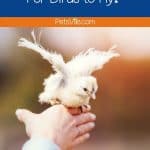How do baby birds learn to fly?
Do parent birds show them or are they born knowing how to fly?
Those were some of the questions that would run through my mind whenever I saw a bird fly high above me in the clouds.
I was so intrigued that I decided to research how they learn to do that, so let’s look at how the different bird species learn how to fly.
READ MORE: How Long for Birds Eggs to Hatch?
Table of Contents
How Long Does It Take For Birds to Fly?
How long does it take a pilot to fly a plane? The ATP flight school says it takes only two months to fly a private plane competently. (1) Does it take a baby bird that long to learn to fly?
No, it doesn’t. The average time for a baby bird to fly is 19 days. (2) However, this time varies with different bird species. Some will take longer to learn to fly and others a shorter time.
The perfect example of this disparity is the jabiru, which can take up to 110 days to fly (3), and the American robin, which takes only 12 or 14 days. (4)
Intriguing, isn’t it? But then, larger birds take longer to learn to fly, and the Jabiru is one of the largest birds.
We can compare the differences in fledging periods to how human babies learn to walk. Some children learn to walk faster than others. Some do take their time even with the help of their parents.
While leaving the nest too soon could boost the baby bird’s chances of survival, it could prove fatal if its flight feathers aren’t sufficient to support flight. That’s why you’ll see a difference in the time different species take to leave bird nests.
Having seen that different bird species can have different fledging behavior, let’s look distribution of fledging periods among birds.
Baby Birds Fledging Period Distribution
Differences in fledging periods are somewhat inevitable, considering how different bird species are. While some birds have a younger age of fledging, take the American robin, for instance, some are usually in no rush.
I have touched slightly on why these differences are commonplace. But to put that into context for you, I have charts to show how different the distribution of fledging periods can be.
Different Fledging Periods Among Bird Species
Some birds have long distribution times, while some have medium-fledging periods. At the same time, some take a comparatively shorter time.
Here is a chart of birds with an extended period between hatching and fledging.
Birds With Long Fledging Periods
Larger baby birds take longer to learn how to fly than most other birds. This data from Nestwatch shows how some birds have exceptionally long fledging periods. (5)
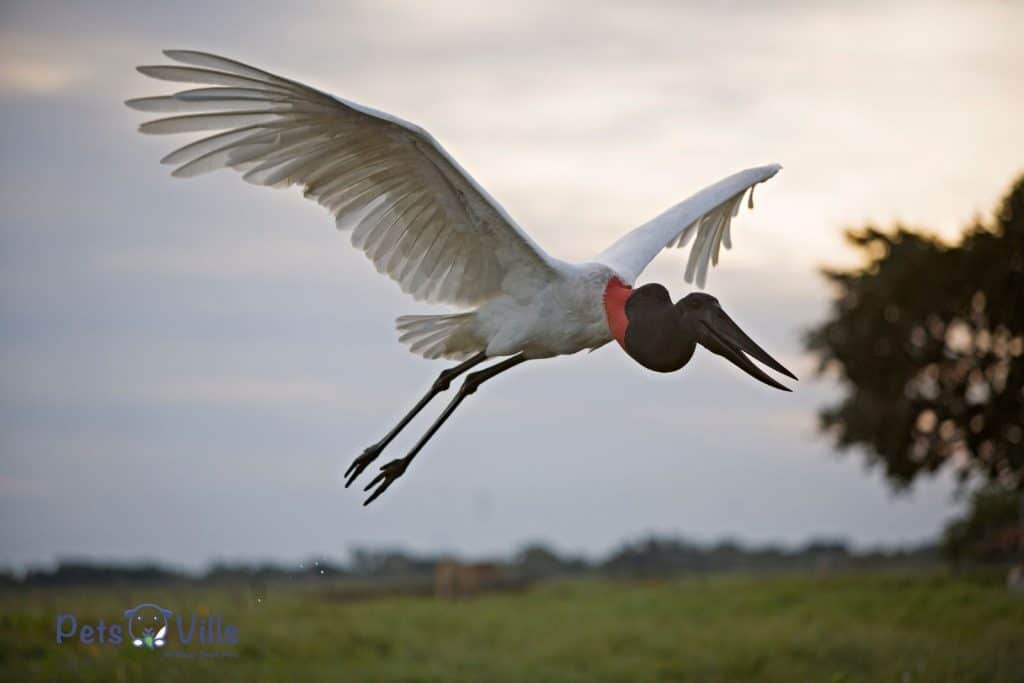
That could have something to do with the size of the birds. Developed feathers take time to grow on a larger bird than on a smaller bird.
The more developed the feathers, the more the chance of survival for a large bird. Therefore most large birds will take their time to grow their wings before they venture out of their bird nests.
| Birds | Average Fledging Period |
| Jabiru | 96 days |
| Great Blue Heron | 74.5 |
| Black Vulture | 74.3 |
| Golden Eagle | 73.5 |
| Bald Eagle | 72.5 |
| Scarlet Macaw | 69 |
| Barn Owl | 65.4 |
| Turkey Vulture | 55.5 |
| Osprey | 54.5 |
Birds With Medium Fledging Periods
Nestwatch’s database on bird fledging periods shows that many birds have medium fledging periods. (5) For context, see the below chart.
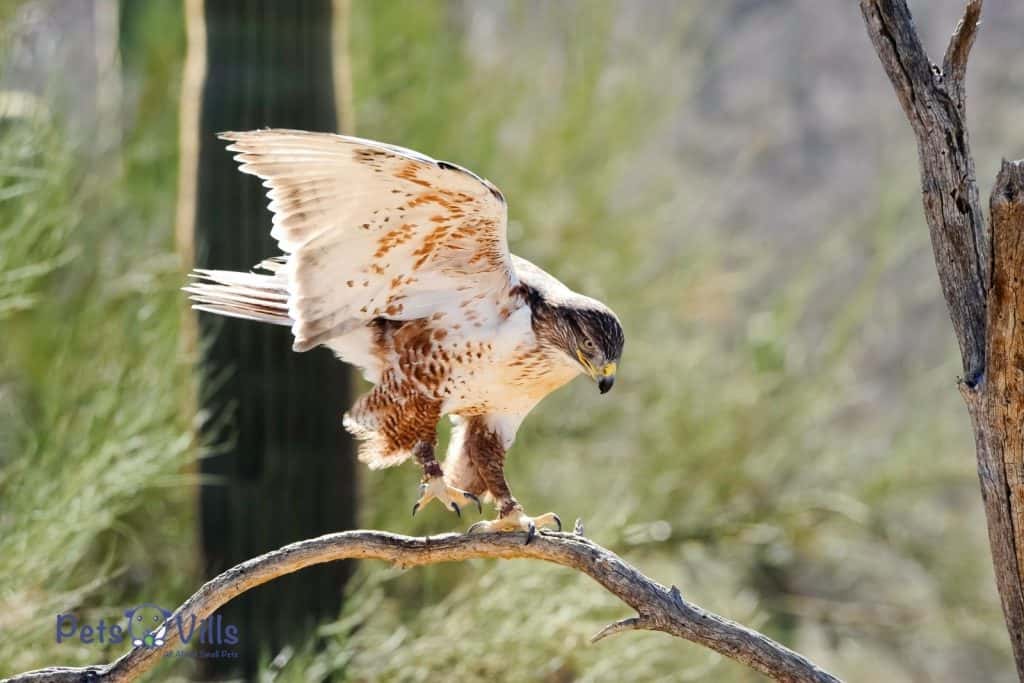
| Birds | Average Fledging Period |
| Ferruginous Hawk | 48.5 |
| Fiery-billed Aracari | 48 |
| Herring Gull | 47.5 |
| American Crow | 43.3 |
| Burrowing Owl | 43 |
| White-Tailed Kite | 42 |
| Red-Tailed hawk | 39.5 |
| Peregrine Falcon | 39.4 |
| Great Horned Owl | 37.2 |
| Common Raven | 37 |
| Red-Shouldered Hawk | 37 |
| Yellow-Crowned Night Heron | 35.6 |
| Swainson’s Hawk | 35.3 |
| Northwestern Crow | 35 |
| Coopers Hawk | 33.8 |
| Northern Saw-whet Owl | 33.4 |
| Barred Owl | 33.4 |
| Wren sp. | 33 |
| Broad Winged Hawk | 32.9 |
| Redheaded Woodpecker | 31 |
Birds With Short Fledging Periods
The birds in the below chart need only 1-2 weeks to become fully-fledged birds. It usually represents a difficult life transition for such birds.
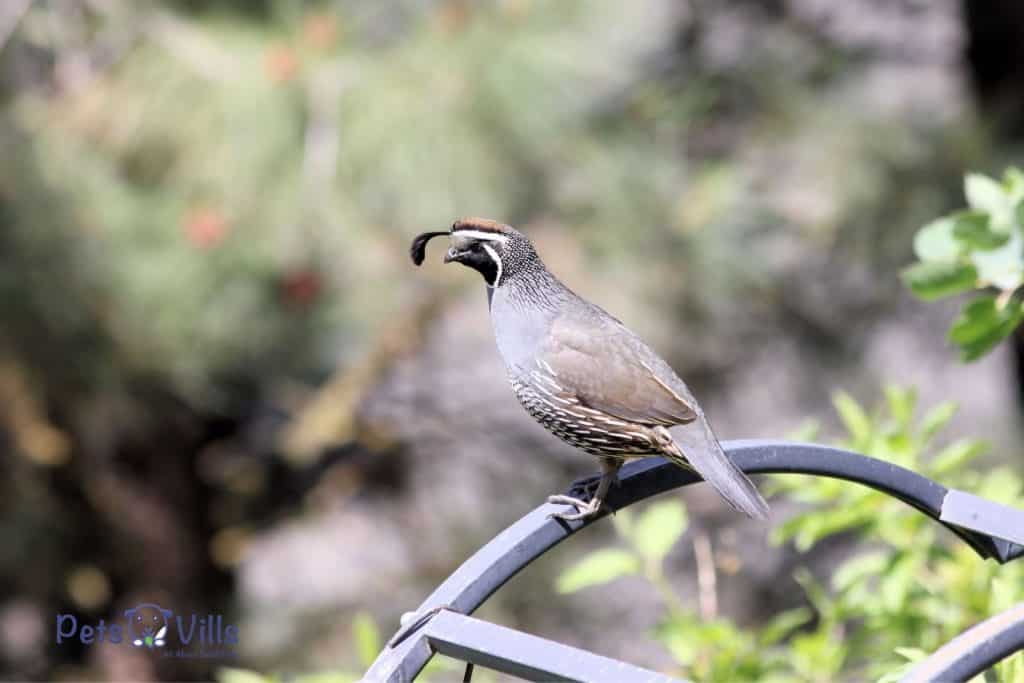
Stay in the nest and get eaten by predators, or venture out where there isn’t that great a chance they’ll survive.
A woodpecker’s baby chick takes its time to leave the nest. But the below birds don’t wait that long. According to the Cornell Lab of Ornithology, the risk of nest predation is usually higher for such birds. (6)
Such birds leaving their nests isn’t them hitting the development threshold necessary to leave. Instead, it shows the role of predation risk in the birds having to leave the nest to boost their survival chances.
Dr. Thomas Martin, a bird expert, investigated the role of predation risk on the fledgling period for birds. Birds that faced a high risk of nest predation recorded shorter fledgling periods than most other birds with a lower risk.
For such birds, the development threshold didn’t matter. As soon as they were two weeks old, they had to leave the nest to survive.
The birds wouldn’t take chances leaving home if it was the difference between life and death.
| Birds | Average Fledging Periods |
| Wild Turkey | 0.7 |
| California Quail | 0.7 |
| Domesticated Mallard | 1 |
| Common Loon | 1 |
| Bufflehead | 1 |
| American Woodcock | 1 |
| Cackling Goose | 2 |
| American Wigeon | 2 |
| Killdeer | 3.5 |
| Ovenbird | 4 |
| Ashy Prinia | 4 |
| Canada Goose | 4.2 |
| Hooded Merganser | 4.9 |
| Yellow-vented Bulbul | 5 |
| Wood Duck | 5.6 |
| Spotted Sandpiper | 7 |
| Veery | 8 |
| Cactus Wren | 8 |
| American Robin | 9 |
| Baya Weaver | 19 |
| Eastern Wood-Pewee | 19 |
| Gila Woodpecker | 19 |
| Bluebird sp | 19.2 |
| Chestnut-backed Chickadee | 19.1 |
How Do Birds Learn to Fly?
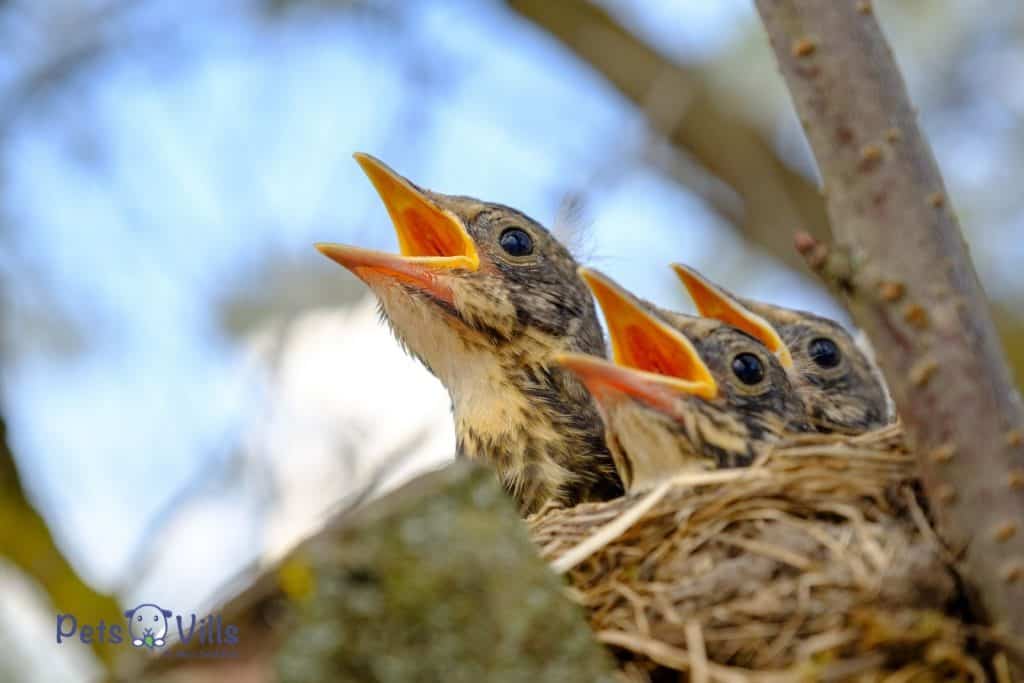
The first 3-4 weeks of a bird are crucial. Not only cant the baby chick see, but they also can’t find their food. That means they would be sitting ducks if a predator stumbled upon their home.
Snakes are infamous predators due to their love for bird eggs. Therefore it’s only crucial that they learn to fly as soon as possible. But then, is learning to fly somewhat of an innate sense?
Flight learning in birds is similar to learning to fly a plane. You start low and slow, then with experience, start flying higher.
In their research, Geoffrey Ruaux, Sophie Lumineau, and Emmanuel de Margerie found that baby birds start by slowly learning to flap their wings. (7)
This wing-flapping often happens in the safety of the nests. At this time, the chicks have tiny wing lengths insufficient for flight.
Baby chicks flap their wings by mimicking parent birds to strengthen them when they need constant wing motion.
However, flapping owes more to an innate sense than teaching, as Spalding explains in his book Instinct and Acquisition. He isolated birds and cut impeded their wings to see if they would instinctively flap their wings, and they did.
Over time with practice, the chicks learn how to flap their wings properly. After learning to flap their wings, the chicks will be ready to start subsequent steps.
The Toronto Wildlife Center website says birds often need lots of practice to learn how to fly. (8) It isn’t the fast process most beginner birders would want to think it is.
It takes a few weeks for a baby songbird to get to grips with flying.
But that’s not the only way little birds learn how to fly. Some bird species actively teach their young to fly.
Gary Clark, a bird expert, writing for Houston Chronicle, says bald eagles teach their chicks to fly by flying by them while screeching to entice them to try it.
The bald eagle in the above video was only shown the ropes and then left to its own devices!
Baby birds can get some help from parent birds, but that isn’t always guaranteed.
Professor Lorena A Barba says that some wild birds encourage fledging behavior in their young by standing outside the nests whenever they feed them. (9)
The distance increases until the fledgling bird ventures out of the nest for food. But then, even with all the help venturing out of the nest is difficult if the bird hasn’t developed flight feathers.
Other bird parents take a drastically different approach to helping their chicks learn to fly- they push them out of the nest and let them figure it out! (10) That gives me the picture of parents kicking out their twenty-something year old!
How do birds sleep knowing they threw their babies out of the nest? Concerned birders might think this is a bit of a stretch.
But like human parents, the adult birds stay close by to check on the chicks. They help them learn to look for food and offer protection. (11) The push is only to encourage the little one to grow up.
Think of it as your mom and dad always being there for you whenever you hit a rough financial patch.
Birds with long fledgling periods might get the chance to have their wing lengths to the level enough to support them. Unfortunately, that’s not a given for most birds. Larger baby birds have that benefit, though.
Why do birds throw babies out of the nest?
Some birds kick their babies out of their birdhouses. Songbirds are a typical example of such parents. (12) Why would a parent bird do that to their young?
There often is a compromise between offspring and their parents for the right time to leave for many bird species. But for some, this compromise comes sooner than the chicks might expect.
There are several reasons why a parent bird does that.
- Reducing The Risk of Predation
While nestlings have an easier time eating and staying warm, it isn’t always the safest place. When in one place, there is a higher risk that a predator can arrive and wipe out an entire brood.
To avoid this, some bird species throw out their young. It makes sense for the parents to risk their young crashing down to earth than wait to get eaten. When a predator arrives, chances of survival are nil. It makes sense, doesn’t it?
- To Start a New Family
American robins have a smaller threshold of development than most birds. Ornithologist Laura Erickson says baby robins leave the nest after only 13 days. (4) By this time, the mother would have left to start another family.
There is always a rush between getting new offspring, so some birds throw out their young to start a new family.
- Boost the Survival Chances of other Babies
The Eurasian coot, White Stork, and the Mexican Gull throw out their young to ensure the survival of other chicks. Can birds pick up babies once they fall? Not if they’re the ones that threw them out.
As crazy as it seems, the birds know what they’re doing. Often these parent birds will attack the weakest of their babies to save the energy of feeding the whole brood.
Watch what this white stork does here:
That will, in turn, make it easier to feed and keep the remaining babies safe. Baby birds, like humans, also need lots of special care, which can be exhausting for a female bird to offer.
So if you’re to use all that energy, wouldn’t you want to raise only those with a higher chance of survival?
And there you have them. So why do birds throw babies out of the nest? It is only to guarantee the survival of the stronger chicks. Think of sacrificing the weakest baby for the greater good.
FAQs
How long do baby birds stay in the nest after hatching
The time different baby bird species remain in the nest varies. Like the American robin, some stay for only two weeks while some, like the Jabiru, stay for over 90 days. The average for most birds, however, is 19 to 30 days.
What time of day do baby birds leave the nest?
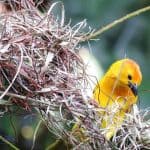
Most altricial baby birds leave the nest early in the morning. That gives them enough time to fly to a safe area away from predators. The reasoning here is that most predators aren’t awake yet to cause any danger early in the morning.
Can baby birds fly when they leave the nest?
Some birds can fly when they leave the nest. But to fly well, they need lots of practice. So despite them being able to fly, they won’t fly as well as adult birds. That comes with experience.
Conclusion
How do baby birds learn to fly? First, they start by practicing flapping their wings before they venture out of the nest.
On venturing out of the birdhouses, learning to fly takes lots of practice. After learning for several weeks, the bird can clock thousands of miles before dying.
Are you a beginner birder who was wondering how birds learn to fly? I hope you now have a clear idea of how.
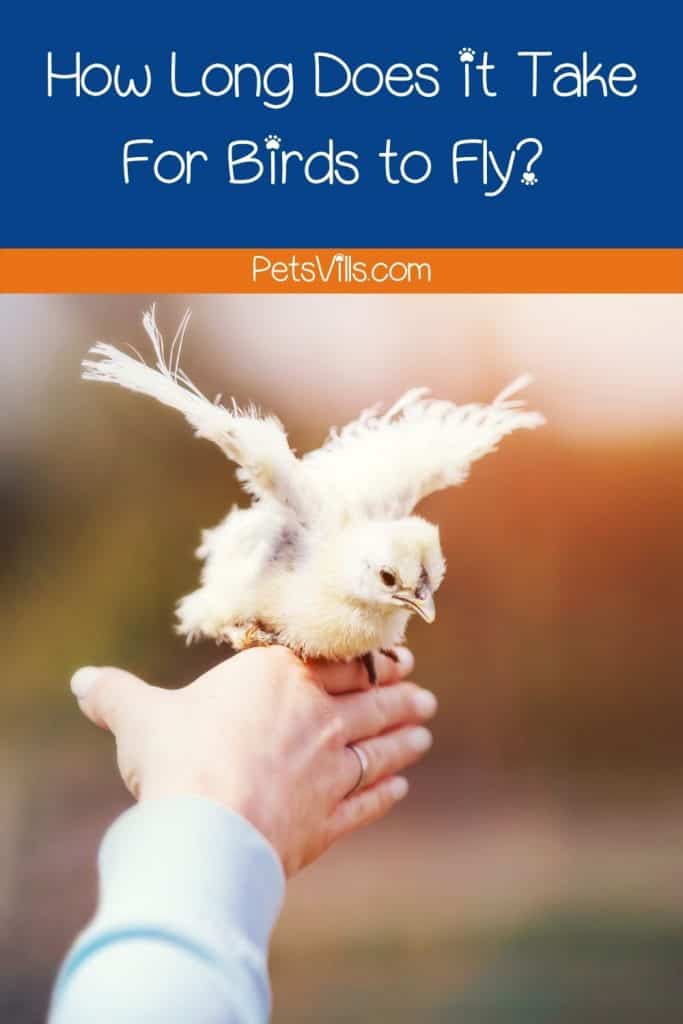
How long does your bird learn to fly? Please share your experience below!
Resources
- 1. “How Long to Become a Pilot / ATP Flight School.” Atpflightschool.com, atpflightschool.com/become-a-pilot/airline-career/how-long-to-become-a-pilot.html.
- 2. Santema, Peter, et al. “Why Do Nestling Birds Fledge Early in the Day?” Animal Behaviour, vol. 174, Apr. 2021, pp. 79–86, 10.1016/j.anbehav.2021.01.026. Accessed 13 Nov. 2021.
- 3. Andrew McKinley. “Jabiru Mycteria (Jabiru).” Animal Diversity Web, animaldiversity.org/site/accounts/information/Jabiru_mycteria.html. Accessed 10 May 2022.
- 4. “American Robin Nests and Eggs.” Journeynorth.org, journeynorth.org/tm/robin/facts_baby_robins.html.
- 5. “NestWatch – Where Birds Come to Life.” NestWatch, nestwatch.org/.
- 6. “NestWatch Looks at the (Citizen) Science in a Few Proverbs.” All about Birds, 15 Apr. 2011, www.allaboutbirds.org/news/nestwatch-looks-at-the-citizen-science-in-a-few-proverbs/.
- 7. “De%20Margerie%20E%5BAuthor%5D – Search Results.” PubMed, www.ncbi.nlm.nih.gov/pubmed/?term=de%20Margerie%20E%5BAuthor%5D&cauthor=true&cauthor_uid=32576105. Accessed 10 May 2022.
- 8. I Found a Fledgling Songbird – Toronto Wildlife Centre. www.torontowildlifecentre.com/wildlife-emergency-rescue-hotline/how-to-help-orphaned-baby-wild-animals/how-to-help-baby-birds/fledgling-songbird/. Accessed 10 May 2022.
- 9. Nature vs Nurture: How Do Baby Birds Learn How to Fly? | Bio-Aerial Locomotion. blogs.bu.edu/bioaerial2012/2012/10/09/nature-vs-nurture-how-do-baby-birds-learn-how-to-fly/. Accessed 10 May 2022.
- 10. “Baby Birds.” City Wildlife, citywildlife.org/found-animal/baby-birds/. Accessed 10 May 2022.
- 11. “Baby Birds out of the Nest.” Mass Audubon, www.massaudubon.org/learn/nature-wildlife/birds/baby-birds-out-of-the-nest.
- 12. “Why Some Songbirds Kick Their Chicks out before They Can Fly.” Audubon, 22 June 2018, www.audubon.org/news/why-some-songbirds-kick-their-chicks-out-they-can-fly. Accessed 10 May 2022.
Alina Hartley is a small-town girl with a ginormous love of bearded dragons. It all started with Winchester, a baby bearded who was abandoned at the shelter by his former owners because of a birth defect that caused one front leg to be shorter than the other. Alina originally went to the shelter looking for a guinea pig, but one look at Winchester and it was love at first sight. From that day on, Alina has dedicated her life to learning everything she can about bearded dragons. She loves helping new beardie parents start their incredible journey with these magnificent reptiles.
Follow her on:
LINKEDIN
TWITTER.
Read her latest articles HERE
Learn more about her HERE.

